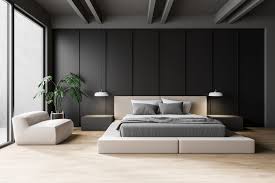Introduction
The Art and Science of Interior Design: Creating Beautiful, Functional Spaces
In this present reality where we invest a lot of energy inside, the spaces we occupy significantly affect our prosperity and personal satisfaction. Inside plan is the craftsmanship and study of improving these spaces to make them all the more tastefully satisfying, utilitarian, and agreeable. A field consolidates inventiveness with common sense, offering vast opportunities for changing standard rooms into remarkable conditions. Whether you’re hoping to invigorate a solitary room or embrace a total home makeover, understanding the standards of inside plan can assist you with making spaces that mirror your own style as well as meet your regular requirements.
The Foundations of Interior Design
At its heart, inside plan is about something other than organizing furniture and picking tones. It includes a profound comprehension of plan rules that guide how spaces ought to be organized and enlivened. Key standards include:
- Balance: Accomplishing balance inside a space through the conveyance of visual weight. This can be even, where components are reflected on one or the other side, or hilter kilter. Where equilibrium is accomplished through fluctuated components that make a feeling of concordance.
- Contrast: Making visual interest by comparing various components, like light and dim tones or smooth and unpleasant surfaces. Contrast assists with featuring central focuses and add profundity to a plan.
- Rhythm:Laying out a feeling of development inside a space through redundancy of examples, tones, or surfaces.
- Scale and Proportion:Guaranteeing that components inside a space are as one with one another and with the actual room. Scale alludes to the size of items comparative with the room, while extent manages the connection between various components.
- Harmony:Uniting different plan components to make a strong and bound together look.
Key Elements of Interior Design
Inside plan incorporates a few fundamental components that add to the general look and feel of a space:
- Color: Variety significantly affects state of mind and climate. Whether you settle on quieting neutrals or strong, lively shades, variety decisions can change a room and impact the way things are seen.
- Lighting: Legitimate lighting is vital for both usefulness and climate. Various kinds of lighting, including encompassing, errand, and complement lighting, cooperate to improve the convenience and environment of a space.
- Furniture: The choice and plan of furniture influence both the style and usefulness of a room.
- Textures and Patterns:Consolidating different surfaces and examples adds visual interest and profundity. The utilization of materials like wood, texture, metal, and glass can establish a dynamic and connecting with climate.
- Space Planning:Viable space arranging includes organizing furniture and different components to boost the usefulness of a room while keeping a stylishly satisfying design. Legitimate space arranging guarantees that the room is both pragmatic and outwardly engaging.
Trends in Interior Design
Inside plan is an always advancing field, with recent fads arising consistently. A few latest things include:
- Sustainable Design: A developing accentuation on eco-accommodating materials and energy-effective arrangements mirrors a pledge to decreasing natural effect. Economical plan centers around utilizing assets dependably and integrating reused or regular materials.
- Biophilic Design: This pattern coordinates regular components into indoor spaces to upgrade prosperity and interface tenants with nature. Highlights like indoor plants, regular light, and natural materials are key to biophilic plan.
- Minimalism:Moderate plan advances effortlessness and usefulness, portrayed by clean lines, unbiased tones, and an emphasis on cleaning up. It plans to make tranquil and coordinated spaces.
- Smart Home Integration: The joining of brilliant innovation into inside plan is turning out to be progressively famous. Gadgets like shrewd lighting, indoor regulators, and security frameworks improve comfort and proficiency.
The Role of an Interior Designer
They team up with clients to comprehend their necessities and inclinations, offering mastery in variety plans, furniture choice, and design arranging. Creators likewise guarantee that their plans comply with construction laws and guidelines, giving an exhaustive way to deal with inside plan.
Personalizing Your Space
Eventually, inside plan is tied in with making spaces. That mirror your own style and meet your down to earth needs. Whether you favor a contemporary, moderate look or a comfortable, customary feel, the key is to consolidate components that cause you to feel at ease. Individual contacts, like fine art, materials, and novel furniture pieces, help to implant your character into the plan.
Conclusion
Inside plan is a diverse discipline that mixes craftsmanship and science to improve the spaces we live and work in. By figuring out its center standards and remaining informed about latest things, you can establish conditions that are both lovely and practical. Whether working with a planner or taking on a Do-It-Yourself project, the objective is to create spaces that are custom-made to your necessities, mirror your style, and work on your general personal satisfaction.

